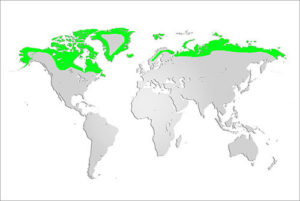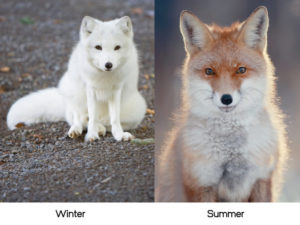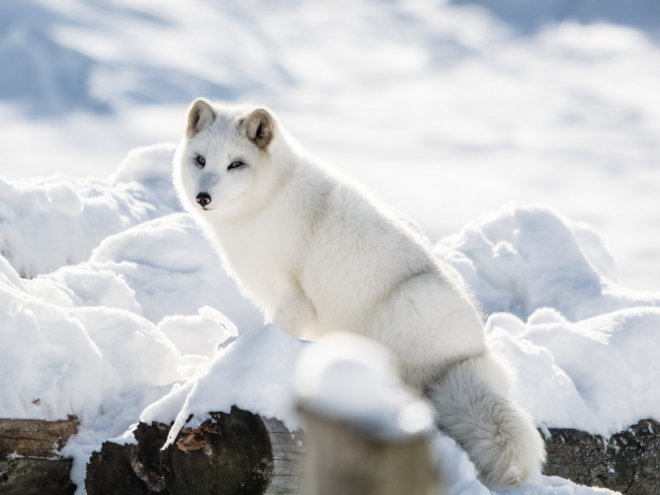The arctic fox is an incredibly hardy animal that can survive frigid Arctic temperatures as low as –58°F in the treeless lands where it makes its home.

It has furry soles, short ears, and a short muzzle—all-important adaptations to the chilly clime. Arctic foxes live in burrows, and in a blizzard they may tunnel into the snow to create shelter.
Common Name: Arctic Fox
Scientific Name: Vulpes lagopus
Type: Mammals
Diet: Omnivore
Group Name: Skulk, leash
Average life span in The Wild: 3 to 6 years
Size: Head and body: 18 to 26.75 inches; tail: up to 13.75 inches
Weight: 6.5 to 17 pounds
Arctic foxes have beautiful white (sometimes blue-gray) coats that act as very effective winter camouflage. The natural hues allow the animal to blend into the tundra’s ubiquitous snow and ice. When the seasons change, the fox’s coat turns as well, adopting a brown or gray appearance that provides cover among the summer tundra’s rocks and plants.
 These colorings help foxes to effectively hunt rodents, birds, and even fish. But in winter prey can be scarce on the ground. At such times, arctic foxes will follow the region’s premier predator—a polar bear—to eat the leftover scraps from its kills. Foxes will also eat vegetables when they are available.
These colorings help foxes to effectively hunt rodents, birds, and even fish. But in winter prey can be scarce on the ground. At such times, arctic foxes will follow the region’s premier predator—a polar bear—to eat the leftover scraps from its kills. Foxes will also eat vegetables when they are available.
Like a cat’s, this fox’s thick tail aids its balance. But for an arctic fox the tail (or “brush”) is especially useful as warm cover in cold weather.
Female arctic foxes give birth each spring to a large litter of up to 14 pups.
My Teaching Library as a FREE resource for students! To get your free resource (an instant download), click here or on the photo below!

Here are additional My Teaching Library products that can be used when studying the Arctic or habitats:
- Bird of the Arctic – Willow Ptarmigan
- Learning about Habitats Lapbook
- What’s my Habitat? Animal File Folder Game
- Penguin Shape Book
- Seal Shape Book
________________________
>> Learn more about My Teaching Library! <<
Are you a member of the My Teaching Library FB group? If not, JOIN US TODAY!


